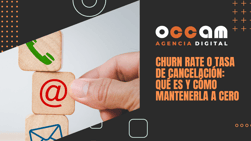Index Content
Permission marketing promotes a more personal and less invasive relationship with potential customers
have you ever made an online purchase and been offered to check a box to receive more information and promotions about the company's services? This is a permission marketing strategy, which allows consumers to decide whether they want to receive advertising from a brand or not (an essential part of inbound marketing).
The origin of this type of marketing dates back to 1999, when the term was coined by the American entrepreneur Seth Godin (who is also the creator of viral marketing) in his book The Marketing of Permission. Therefore, this concept was born as a response to society's gradual disinterest in traditional advertising, something that was already happening at the end of the 20th century and which has become much more acute since then.
Some of the reasons for the rise of permission marketing are: free access to the Internet, the large amount of information generated on a daily basis, the diversity of purchasing options and the immunity to traditional marketing strategies. After all, it all stems from the user's preference for satisfying their tastes on demand.
Therefore, to better understand the nature of this type of marketing, let's analyse its three main pillars one by one:
- anticipation: the company tells users in advance what kind of content they will have access to, and consumers give their permission while waiting to receive it.
- personalisation: The brand sends advertising to specific users, so it must personalise the message to generate a relationship of trust and closeness (in line with one-to-one marketing).
- relevance: Consumers expect these communications because they are of interest to them, so the company must offer them advertising according to their preferences and needs.
and what examples of this strategy can we find in everyday life? In addition to email marketing (the most common), there are also newsletters, social networks, RSS feeds and loyalty cards.
Advantages of implementing permission marketing
Permission marketing offers benefits to both users (who receive only what they want) and companies (who are in contact with potential customers interested in their brand). In this line, from OCCAM we present seven advantages offered by permission marketing:
- it is an alternative to intrusive advertising. Contrary to the discomfort that can be generated by unwanted phone calls or commercial e-mails, permission marketing promotes a relationship of mutual interest.
- it generates expectation and thus serves as a reminder to users that your brand is still there. You have to take advantage of their desire to receive communications and improve their experience with the company through good branding work.
- Facilitates the segmentation of potential customers. The data of each of your contacts facilitates segmentation into different groups that you can target according to the type of campaign you are carrying out.
- optimises communication. Personalisation allows you to know the interests of users, so you can improve their experience with your company by offering them relevant content in each case. In addition, having a list of contacts guarantees a more human and effective communication than if you were to send mass advertising.
- it is cheaper than other marketing strategies. Although it does not have the same reach as a TV commercial, this type of communication is more human in nature and, above all, cheaper. It is clear that sending emails and handling personal data is cheaper than hiring an audiovisual company to record a spot and launch it on a TV channel. Even so, both strategies can be complementary.
- guarantees a higher conversion rate. Permission marketing aims to nurture users' interest in your company in order to convert them into customers. Therefore, by bringing into the equation contacts who have demonstrated their desire for your brand, you can achieve a much higher conversion rate than with other strategies. Let's go back to the example of a TV commercial: how many of the thousands of viewers will become customers? And, almost more importantly, how do you measure that data? Because permission marketing makes it easier to track the journey that each user makes, but it is more complicated to measure the results of a TV commercial.
- it improves brand image and reputation. Even if users opt out of receiving advertising, by giving them the option to opt out, rather than sending them invasive content directly, you are showing a more responsible brand image. The same goes for unsubscribers and existing contacts, as one of the goals of permission marketing is to engage your buyer personas by involving them in your brand.
Tips for success with permission marketing
The process of getting users interested in your brand and converting them into customers can be more difficult than it looks, so we recommend you follow the following tips one by one:
- focus your efforts on attracting your target audience- you don't need to attract all types of users, just those most interested in your brand
- Offer rewards: To convince your buyer personas, it's a good idea to give them something in return, whether it's free quality content (such as an ebook) or a promise to offer them discounts.
- make good use of databases. Thanks to the knowledge you have of your contacts, you can create content in line with their interests or get ideas for improving your products or launching new services.
- segment your contacts- group users only if they are useful for your campaigns.
- send quality content. In addition to promotions, make sure your contacts receive materials that are relevant to them. This will improve their relationship with your company.
- keep users informed without saturating them. Just as it is annoying to receive unwanted advertising, it seems counterproductive that your contacts consider your relationship to be excessive. Therefore, it is important to establish a frequency for sending communications, which can be weekly, monthly, etc. Even so, you can make exceptions in specific cases that arouse special interest in users, such as the launch of a new product.
- convert your leads into customers. Once you have fed your contacts with quality content according to their interests, you can start converting them into customers and offer them the purchase of your services.





